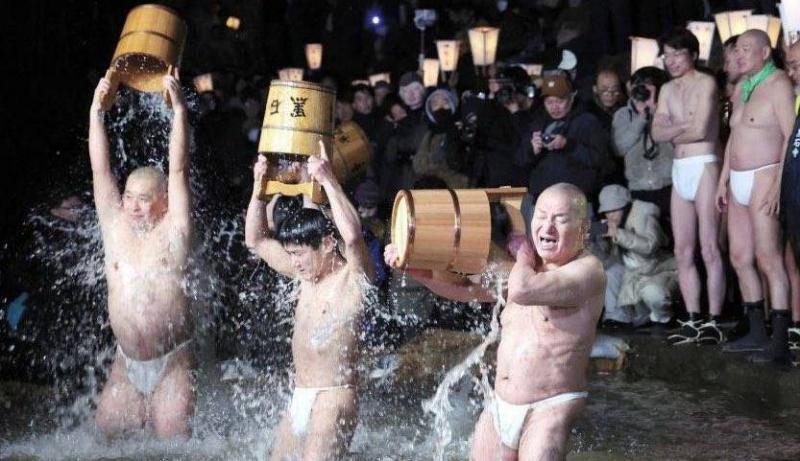In winter temperatures approaching freezing, many men don white loincloths and wrestle in an attempt to obtain an amulet during the "Somin Sai" festival in Japan, known as the "Naked Man Festival." This event, which is claimed to have been held for over 1,000 years, took place last Saturday at the secluded Kokusikiji Temple, becoming the latest Japanese tradition to fall victim to the country's aging population crisis. In an online post, the festival organizers acknowledged their failure to find a sufficient number of young participants willing to alleviate the pressures on local elderly residents, who are unable to keep up with the demands of the ceremonies.
Japan's population has been steadily declining since its economic boom in the 1980s, with a fertility rate of 1.3, well below the 2.1 rate needed to maintain population stability. For over a decade, the number of deaths has exceeded recorded births in Japan, posing an increasing problem for leaders of the world's fourth-largest economy. They are currently facing a swelling number of seniors and a shrinking workforce, which challenges them to fund pensions and healthcare as the demands of an aging population grow.
The "Somin Sai" festival is one of three major "Naked Man" festivals, or Hadaka Matsuri, held throughout the country. It takes place annually on the seventh day of the lunar new year at Kokusikiji Temple in the northeastern Iwate prefecture. According to the National Broadcasting Corporation (NHK), "this ritual is very popular among tourists eager to witness its practice, attracting an estimated 3,000 visitors."
While the ceremonial details of the three major Hadaka Matsuri festivals differ across the country, they share a common spirit: celebrating bountiful harvests, prosperity, good health, and fertility. This festival is known as the Naked Man Festival because male participants wear a Japanese loincloth called "fundoshi" and a pair of white socks known as "tabi."
This year's "Somin Sai" festival saw hundreds of participants carrying Kakuto lanterns, which are square-shaped lanterns inscribed with blessings, chanting "Jasu Juyasa!" (evil, go away) as they plunged into the cold waters of the Yamuchigawa River to purify their bodies in preparation. They then head to the temples to pray for health and good harvests before the evening culminates in a scramble for a bag of wooden amulets blessed by the chief priest.
The winner of the competition was 49-year-old Kikuchi Toshiaki, a local resident and member of the festival heritage preservation society, who said, "It is sad that the festival is ending. I participated in hopes of it being an unforgettable festival." Two of the Hadaka Matsuri festivals are scheduled to be held next year at the Saidaiji Kannoin Temple in Okayama Prefecture and the Koronuma Shrine in Fukushima Prefecture.




